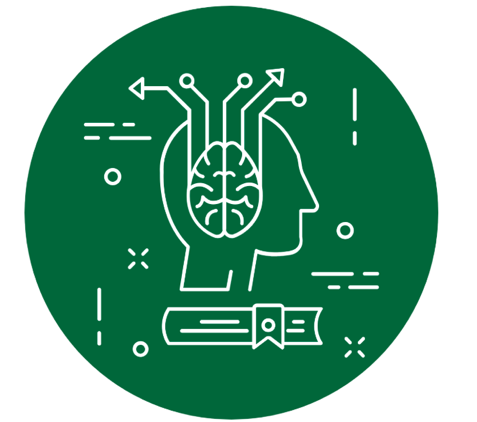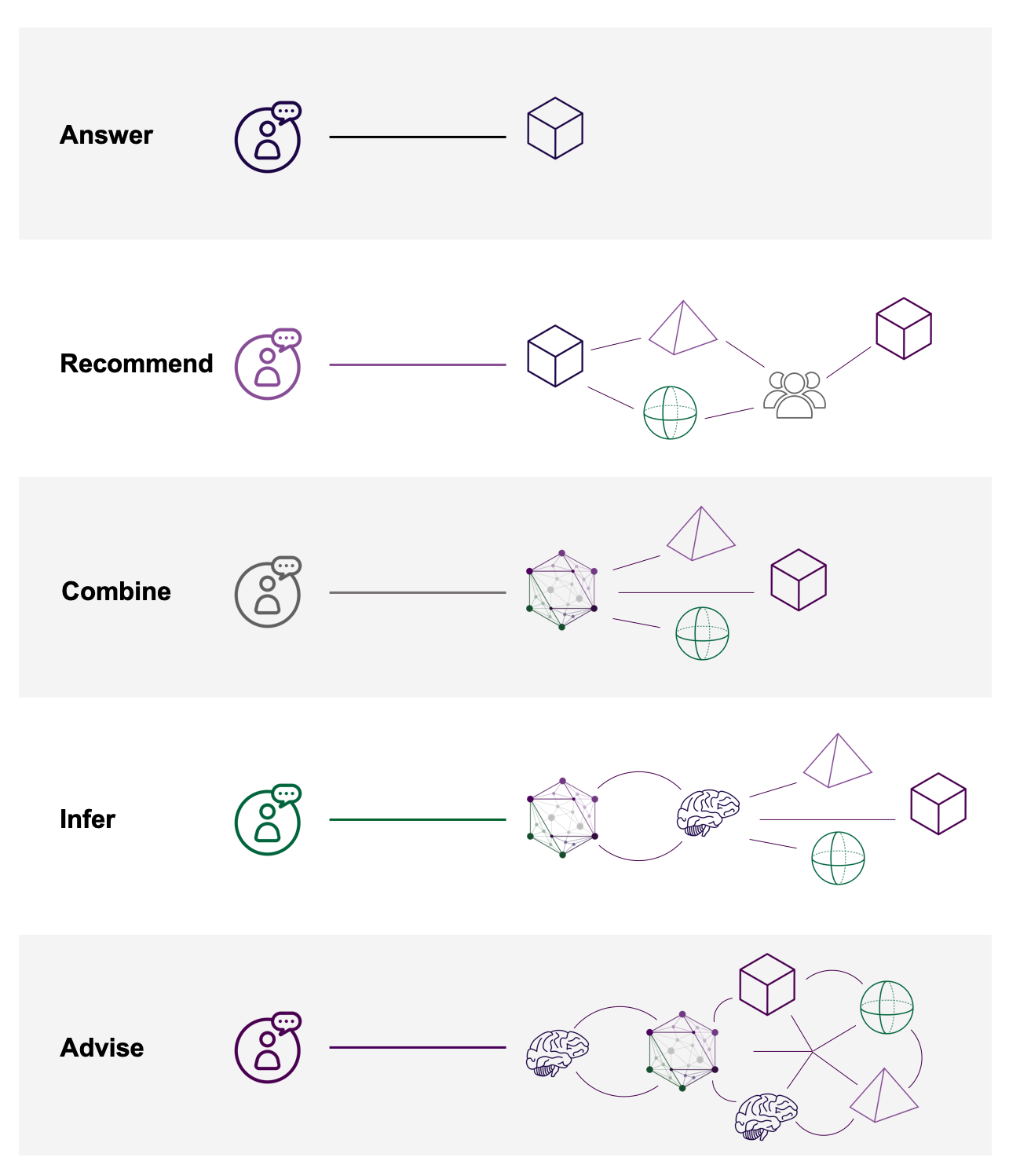At Enterprise Knowledge, our work in the field of Knowledge and Information Management has given us the opportunity to explore a wide range of organizational goals and business drivers with our clients. Over the years, these goals have progressed from simply seeking to managing information, to sharing knowledge, to allowing all users to find, explore, and discover the breadth of information an organization possesses, and now, increasingly, to realize the promises of Artificial Intelligence (AI).
In today’s world, AI is an overly broad term, incorrectly used to express virtually any advanced computing concept. In reality, we at EK define it much more closely to Merriam-Webster’s very simple definition, “the capability of a machine to imitate intelligent human behavior.” When we take this definition, we get to start talking about AI in terms of what it can do for your organization and how it can address knowledge management in very real and actionable terms.
AI has a number of exciting applications that will drastically transform our reality, from driving cars to performing medical operations. In terms of an organization’s knowledge, the future of AI is much closer but potentially just as impactful.
To this point, the vast majority of work in the knowledge and information space has come down to findability. Though search has progressed greatly, a number of organizations still struggle with the ability to design, implement, and maintain an effective search engine that surfaces the right content for the right people in a way that feels intuitive and natural. For some, search has progressed beyond simply returning a conglomeration of links. Through advanced design features like faceting and action-oriented search, we can now deliver a great deal of value. However, many other organizations are still struggling with more basic search, including the simple challenge of having the relevant materials returned and weighted correctly so they may be found.
As we approach AI, we can go beyond find in order to deliver even more value to organizations. At EK, we talk about these elements as a set of capability levels of AI for Knowledge and Information Management, ranging from the easiest to the hardest to achieve:
- Answer – The closest to what advanced searches offer, Answer not only returns a link to an answer, but provides a specific block of information that directly responds to a natural language question. The most common example of this today is asking Siri or Alexa for an answer. Organizations are now beginning to put this into place for their own purposes via advanced action-oriented search, chatbots, and voice assistants. We just completed a pilot for one of our clients, where their knowledge base will surface a succinct answer to questions asked via their search, extracted from larger and more difficult to navigate documents.
- Recommend – With Recommend, indexes of different types of information (ranging from unstructured knowledge, to structured data, to directories of experts) have been linked and related via ontologies. Recommend identifies connections between different types and sources of information and provides relevant recommendations in order that the end user can discover new material and make new connections. Basic recommendation engines have been wired into eCommerce experiences for years, but more mature Recommendation capabilities are now being put into place for other organizational purposes. For instance, we’re presently implementing a recommendation tool for a client that recognizes the background, education, and functions of individuals, as well as the title and topics of meetings to which they’re invited in order to recommend meaningful pre-reading information for them.
- Combine – Up to this point, the capability levels of Answer and Recommend may be relating content, but each piece of information remains separate. With Combine, Knowledge AI takes a big step to begin automatically integrating different types and sources of content into more cohesive and contextualized blocks of knowledge. Like Recommend, this feature is powered via an ontology, often with a graph database powering it. A common example of this is Google’s Knowledge Panels, which integrate information from multiple sources into an easy to absorb and explore view. We’ve recently helped an international organization achieve these capabilities, better integrating their structured and unstructured information with an understanding of global elements like geography, climate, and geopolitical state. Through this web of content and data, the tool can find themes between countries on different continents, recommending meaningful success stories from areas that share attributes with others despite no obvious link. Another client is using these Combine capabilities to guide the integration of multiple different data sets into a more easily managed ecosystem
- Infer – Infer goes a step beyond Combine and introduces programmed decision-making logic into the mix. We’re working now with an organization to design their new Sales Brain, which, based on data including client demographics, behaviors, and logged needs, will automatically build a sales pitch with supporting material including sales training and ongoing coaching. One of the most powerful capabilities here is that, with the combination of tracking, analytics, and feedback measuring outcomes, the Sales Brain will effectively learn how to make better pitches over time. The potential ROI on an investment like this quickly becomes meaningful, with higher conversion rates, less time to close deals, and more time focused on client interactions instead of creating and recreating material. With Infer, an organization’s content of all types and all locations, won’t just be better leveraged, it will actually be automatically combined and enhanced to create richer and more effective knowledge over time.
- Advise – Beyond Infer, the primary target for many organizations regarding Knowledge AI is for their systems to spot trends, identify potential risks and opportunities, and provide actionable guidance leveraging a complete view and understanding of the knowledge and information that exists. Though the potential and even much of the necessary technology is there, for most organizations, the structure of information and the documented decision-making logic will be the limiting factors to achieving this level of Knowledge AI. Each step along this range of capability levels, if designed correctly, will help an organization get closer to their end goals for Knowledge AI as long as the overall business drivers of the organization and goals of the individual end users are kept at the center of the process.
Moving along each step of the Knowledge AI capability levels offers a significant potential for business value and hard returns on investment. With the right design process and forward-looking approaches to software, governance, and iteration, Knowledge AI can begin to become real for your organization in a matter of months, with increasing value and capabilities clearly visible on your roadmap. If you’re looking for help getting started, want to ensure you’re moving in the right direction, or are ready to design and implement Knowledge AI, learn more or contact us. We’re here to help.


